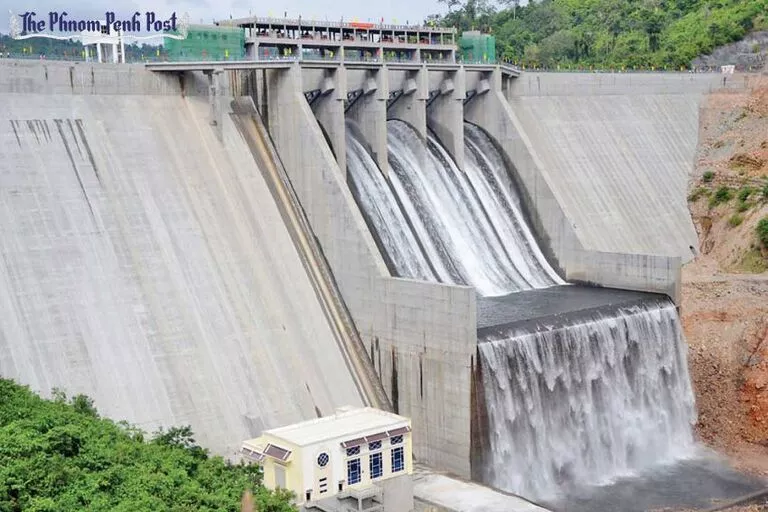Kamchay dam | Kampot Cambodia
The Kampot dam, also known as the Kamchay dam, is a hydroelectric power station located in southern Cambodia on the Kamchay river, a tributary of the Prek Teuk Sap river. The dam was completed in 2011 and it is one of the largest hydroelectric power stations in Cambodia. It has a capacity of 193 megawatts and produces approximately 900 million kilowatt-hours of electricity per year. The Kampot dam's reservoir has a capacity of 110 million cubic meters of water.

The construction of the Kampot dam was controversial due to the displacement of local communities and environmental concerns. The dam's construction led to the flooding of several villages and caused the relocation of over 1,000 families. There were also concerns about the impact on the river's ecosystem and the loss of fish habitats.
Despite the controversies, the Kampot dam has contributed significantly to Cambodia's energy production, helping to meet the country's growing demand for electricity. The power generated by the dam is used to provide electricity to the surrounding areas, including the city of Kampot.
The Kampot dam has had a positive influence on the city, providing a reliable source of electricity and helping to support the local economy. The city of Kampot is located about 10 kilometers from the Kampot dam.
One of the most interesting facts about the Kampot dam is that it was built by China Guodian Corporation, a state-owned enterprise in China. The project was funded by a loan from the Chinese government and it was built by Chinese engineers and workers. The dam is one of several infrastructure projects in Cambodia that have been built with Chinese assistance in recent years.
Another interesting fact about the Kampot dam is that it has a fish ladder, which allows fish to migrate upstream and downstream. The fish ladder was built to mitigate the impact of the dam on the river's ecosystem and to help preserve fish habitats. The fish ladder is an important feature of the dam, as it helps to maintain the ecological balance of the river.
The Kampot dam has also had a positive impact on the local community. The dam has created job opportunities for local people, both during the construction phase and in the ongoing maintenance and operation of the dam. The dam has also provided a reliable source of electricity, which has helped to improve the quality of life for people in the surrounding areas. The electricity generated by the dam has also helped to support the development of local industries, such as agriculture and tourism.
The Kampot dam is an important infrastructure project in Cambodia, providing a significant source of hydroelectric power to the surrounding areas. Despite the controversies surrounding its construction, the dam has had a positive impact on the local community, providing job opportunities and a reliable source of electricity. The dam is an important example of the role that infrastructure projects can play in supporting economic development and improving the quality of life for people in developing countries.
Beach Beautiful bays statue Bus Station Cambodia Vietnam Friendship Statue Clock Tower Durian Roundabout Rainbow Bridge (Old Bridge) Firefly Cruise International Port Kampong Bay Bridge (New Bridge) Kampong Bay Fountain King Ang Duong Statue Lotus Pond Pagoda Province Stadium Provincial Museum River Beach Riverside Fitness Salt Fields Salt Workers Roundabout Wave Roundabout Year 2000 Monument
